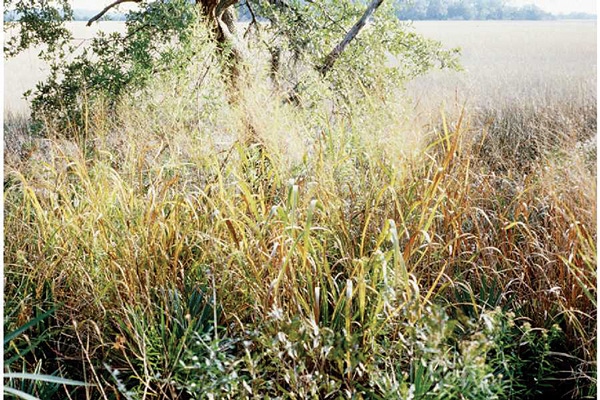November 16, 2010

With cooler temperatures, one is more apt to go out on rangeland and deal with difficult brush plants like huisache, a common problem here in the Coastal Bend. Some control options will work on this brush specie in the fall. So let’s take a closer look at this common pest.
Huisache is a small tree in the legume family, shaped like an upside-down cone. This shrub to small tree is a native, warm-season perennial commonly called "sweet acacia." The stems, which can reach 15 feet tall, have many spines that are paired, straight, pale and pinlike.
The leaflets are gray-green and twice-compounded with eight to 16 divisions, each having 10 to 20 pairs of small, sensitive leaflets. The flowers are produced on a fragrant, yellow, fluffy ball with many clusters of yellow stamens. Huisache fruits are black and tapered at each end. The seedpods are cylindrical and 1½ to 3 inches long; when mature, they turn dark brown or black.
Sometimes confused with twisted acacia, huisache can be distinguished by its spreading growth form, the shorter and broader legume, and the position and/or presence of a gland on the petiole, or leaf stem. In huisache, the petiolar gland is either absent or located near the middle of the leaf petiole.
Poor grazing
Huisache provides poor grazing for wildlife and livestock, so there is not much value in this plant, as it merely removes precious ground water from our soils that could be providing moisture to desirable grasses. However, since it is a legume, it will provide nitrogen for winter forages.
Huisache is a prolific seed producer and the seeds are eaten by birds, deer, cattle and hogs as well as by many other mammals. If the seeds pass through the digestive system of a bird or animal, germination increases and huisache plants emerge wherever animals have deposited the seed.
Huisache is one of the many brush species that will re-sprout after top removal, so simply shredding this plant is not a good management choice. Huisache can be best managed using mechanical means, like grubbing.
Control options
Mechanical removal of this plant could vary in cost ranging from $20 to $150 per acre. In contrast, controlling this plant with herbicides can range in cost from $2 to $250 per acre. At least 50 percent of the different herbicide treatments options are suggested for fall. When considering a chemical treatment, the best results will be obtained from individual plant treatment. For information regarding different chemical treatment options, review the Pestman website at http://pestman.tamu.edu/#0
Prescribed burning is another option, which, if part of an overall range management plan for your ranch, can be an economical method of keeping huisache as well as other brush species in manageable numbers. In the Texas Coastal Bend burning a pasture every four years kills most of the one and two-year-old seedlings. However, most of the three-year-old seedlings and older plants will have the tops killed and will re-sprout the next year, according to experts with the Coastal Bend Prescribed Burn Association.
More information about controlling Huisache may be obtained from your local County Extension Agent.
You May Also Like




